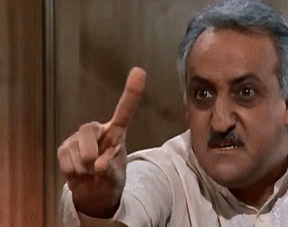Hello guys, my project is almost ready for first start. Need only 1.2v stab
I use this components: panasonic fc, elna silmic, wima, crystek standart oscillator, cmf dale vishay resistors, opa1641, Kumkang polystyrene capacitors
 [/url][/IMG]
[/url][/IMG]
I use this components: panasonic fc, elna silmic, wima, crystek standart oscillator, cmf dale vishay resistors, opa1641, Kumkang polystyrene capacitors

Last edited:
...Need only 1.2v stab...
Under some circumstances ESS recommends increasing that voltage regulator to 1.3v.
...crystek standart oscillator...
Why use fancy audiophile passive components but then use a clock not well suited for a high quality DAC?
Why use fancy audiophile passive components but then use a clock not well suited for a high quality DAC?

The Pontiff is upset....
True to form the Pontiff arrives, contrary to popular belief the inquisition never ended .....😛
All in jest .......🙂
True to form the Pontiff arrives, contrary to popular belief the inquisition never ended .....😛
All in jest .......🙂
Attachments
Last edited:
My experience show that 80% success is analog output part quality.
Other hand I make this dac for compare with my tda1541a.
Very strange for me was that oppo UDP-205 (9038pro inside) sound more poor and not interesting on vocal. Voice from TDA1541 are divine.
If this project sound the same that oppo I selling it and leave 1541.
Other hand I make this dac for compare with my tda1541a.
Very strange for me was that oppo UDP-205 (9038pro inside) sound more poor and not interesting on vocal. Voice from TDA1541 are divine.
If this project sound the same that oppo I selling it and leave 1541.
Probably this will sound more like Oppo than like TDA1541. Please let us know what you think after you try it 🙂

MY ES9028PRO PROJECT, SOUNDS MUCH WORSE THAN TDA1541A
ESS HAVE A MORE DETAILES BUT VOCAL IS DISGUSTING AND BASS ARE VERY WEAK
MY DESIGION: I LEAVE A TDA1541A, NOW IS MAKING A DOUBLE TDA1541




Last edited:
Yes a DAC should be in a metal casing for best results. Slow electronics are less vulnerable to that. ESS are sensitive to XO quality but that is no surprise with SD DACs. I used a cheap Winfield Connor last weekend and discovered it needed a run in time. I don't know anything about this particular DIYINHK design but ESS DAC chips can be implemented so that they shine. In some circles however it is very fashionable to complain about the "ESS highs" and mention the magic "TDA1541A" word for common approval. No 24/96 or 24/192 then 😉
BTW I used to use the same LT regulator boards but ran into some issues with a few of them recently. Apparently fast start up resistors are omitted resulting in a very slow ramp up time of many seconds (depends on value of Cset). This caused trouble in a DAC with the XO. I also had one where one of the diodes became a short. Capacitors are fake anyway so a few 11DQ10 and a new filter cap are a minimum when the slow ramp up time can be tolerated.
BTW I used to use the same LT regulator boards but ran into some issues with a few of them recently. Apparently fast start up resistors are omitted resulting in a very slow ramp up time of many seconds (depends on value of Cset). This caused trouble in a DAC with the XO. I also had one where one of the diodes became a short. Capacitors are fake anyway so a few 11DQ10 and a new filter cap are a minimum when the slow ramp up time can be tolerated.
Last edited:
Not maybe. "Fast" electronics need a metal casing/shield. A normal home is polluted with HF/RF these days. The days of open/wooden/plastic setups are therefor over.
Last edited:
Agreed about needing a case. At least 18-gauge steel, or else about 1/2" aluminum.
Regarding ESS dacs, I have never heard one that sounds as good as AK4499. That includes a Benchmark DAC-3 which uses ES9028PRO. That said, I know what some of the guys are doing to make ESS sound better. IMHO register programming is a must. Can't get good sound without it. Using good quality dual audio clocks and turning off the internal ASRC helps too.
Regarding ESS dacs, I have never heard one that sounds as good as AK4499. That includes a Benchmark DAC-3 which uses ES9028PRO. That said, I know what some of the guys are doing to make ESS sound better. IMHO register programming is a must. Can't get good sound without it. Using good quality dual audio clocks and turning off the internal ASRC helps too.
Last edited:
From an open so hampered structure to a whopping 1/2" aluminium case is a big step. A too big step I think 🙂 I would stop immediately if I had to build/buy cases of 12.7 mm thick aluminium. That is if I understand these strange units correctly.
BTW it comes to my eyes that the wiring from the Amanero (clone?) to the DAC board is longish just like some of the PSU wiring.... Won't matter probably as the verdict is out already. If it was my device I would invest some time in placing the boards closer together in a metal casing, tidy up wiring, maybe use a separate PSU for the Amanero and try out other PSU's (or at least measure how they perform).
BTW it comes to my eyes that the wiring from the Amanero (clone?) to the DAC board is longish just like some of the PSU wiring.... Won't matter probably as the verdict is out already. If it was my device I would invest some time in placing the boards closer together in a metal casing, tidy up wiring, maybe use a separate PSU for the Amanero and try out other PSU's (or at least measure how they perform).
Last edited:
I have question about oscillator: now I use crystek C3390 100MHz.
You advice me to change it to NDK NZ2520SD 80MHz.
In my this setup (standart 2 layers developer board, simple sound plus OPA1641 and LT3042 will I hear any differents?
Ofcource NDK have better spec but its really can hear?
You advice me to change it to NDK NZ2520SD 80MHz.
In my this setup (standart 2 layers developer board, simple sound plus OPA1641 and LT3042 will I hear any differents?
Ofcource NDK have better spec but its really can hear?
Few weeks ago I fixed a defective ESS DAC of which I built a few. I used a different and to me unknown XO as the ones I normally use were out of stock. When I compare the otherwise identical DACs they do sound different.
In my experiments with ES9023 the XO was one of the most influential parts too together with PCB layout and decoupling.
In my experiments with ES9023 the XO was one of the most influential parts too together with PCB layout and decoupling.
Last edited:
IME the thing with dac clocks is that if the dac has a lot of other problems that are making it sound bad, then it may be hard to hear much difference with a better clock. Once the other problems are fixed or at least reduced significantly, then the effects of a better clock starts becoming easier to hear. Improved stereo imaging and improved reproduction of transients are some things that benefit, at least they have in my experience. Also, some people prefer to use (805 size) SMD film caps for bypass of clocks, rather than X7R ceramic. In addition, with ESS dacs it often helps significantly to configure the DPLL_Bandwith register setting to the lowest stable value, as ESS recommends.
- Home
- Source & Line
- Digital Line Level
- ES9038PRO DIYINHK
![url]](/community/proxy.php?image=http%3A%2F%2F%5Burl%3Dhttps%3A%2F%2Fradikal.ru%5D%5BIMGDEAD%5Dhttps%3A%2F%2Fb.radikal.ru%2Fb32%2F2106%2Fe8%2Fda3f3775d393.jpg%5B%2FIMGDEAD%5D%5B%2Furl%5D&hash=a86ad5f3bdeda416a7bcc2cc43cb1a99)

